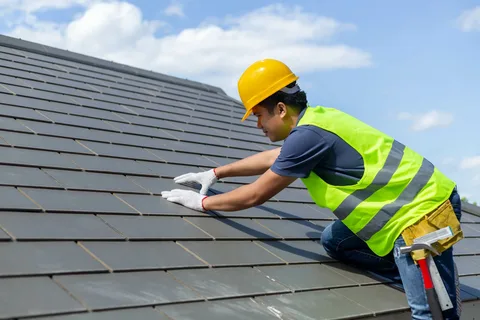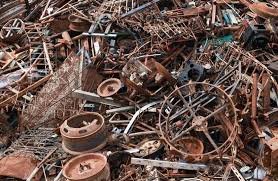How Do You Know When It’s Time for a Roofing Repair?
Owning a home comes with many responsibilities, and one of the most important is maintaining the roof. A well-maintained roof protects your home from the elements and ensures the safety of your family. But how do you know when it’s time to repair your roof? While some signs are obvious, others are more subtle and can go unnoticed until the damage becomes severe. Here, we’ll outline the key indicators that it’s time for a roof repair, so you can address issues before they lead to costly damage.
1. Visible Damage to Shingles
The first sign that your roof might need repair is visible damage to the shingles. Shingles are the first line of defense for your roof, and when they become damaged, it can lead to leaks and other issues. Look for shingles that are cracked, curled, or missing. These are clear indicators that your roof is no longer able to effectively protect your home.
Additionally, if you notice granules from the shingles in your gutters, it could mean that your shingles are reaching the end of their lifespan. Granules are what protect the shingles from UV rays and weather conditions, and when they begin to wear away, your roof is vulnerable.
What to Do?
If you spot any of these issues, it’s time to call a professional roofing contractor. A quick repair now could save you from having to replace your entire roof later.
2. Water Leaks and Stains
Another major sign that your roof needs repair is the presence of water leaks or stains inside your home. Water stains on the ceiling or walls are a clear sign that water is entering your home through a compromised section of the roof. These leaks often start small but can lead to more severe damage over time, including structural issues and mold growth.
The Impact of Water Damage
Water leaks, if left unaddressed, can weaken the structure of your home and lead to rot. Mold and mildew thrive in damp environments, and once these start to grow, they can be difficult to eliminate. Additionally, water damage can compromise the insulation in your attic, making your home less energy efficient and driving up your utility bills.
What to Do?
If you see water stains or feel moisture in your attic, it’s important to address the issue immediately. A professional roofing inspection can identify the source of the leak and recommend the appropriate repairs.
3. Sagging Roofline
A sagging roofline is one of the most serious indicators that your roof may need repair—or even replacement. When the roofline sags, it means that the structural integrity of the roof has been compromised, often due to trapped moisture or rotting materials. A sagging roof can collapse if left unattended, making this an urgent issue.
How to Identify Sagging?
To identify sagging, look at your roofline from a distance. The roofline should be straight; if it bows in the middle or dips at certain points, this is a clear sign of trouble. The sooner this issue is addressed, the better the chances are of preventing further damage.
What to Do?
A sagging roof often requires significant repairs, including the replacement of damaged sections. In extreme cases, a complete roof replacement may be necessary. It’s important to consult with a roofing expert to assess the situation and determine the best course of action.
4. Increased Energy Bills
Have you noticed a sudden spike in your energy bills? While this could be due to various factors, one often-overlooked cause is a damaged roof. A roof that is no longer providing proper insulation will allow hot air to escape in the winter and cool air to escape in the summer, forcing your HVAC system to work harder to maintain a comfortable temperature.
What to Do?
If you suspect that your roof may be affecting your home’s energy efficiency, it’s worth having an inspection to check for any gaps, leaks, or damaged shingles. Repairs can help restore your home’s insulation and lower your energy costs.
5. Age of the Roof
The age of your roof is another important factor to consider when determining if it’s time for repairs. Most roofs have a lifespan of 20 to 25 years, depending on the materials used. If your roof is approaching this age or is even older, it’s time to start considering repairs or even a full replacement, even if there are no visible issues.
What to Do?
A professional roofing contractor can help assess the condition of an aging roof and recommend the best course of action. In some cases, a few repairs might be sufficient to extend the life of the roof for a few more years, while in other cases, a full replacement may be the better option.
6. Damaged Flashing
Flashing is the material used around chimneys, vents, and skylights to seal the roof and prevent water from entering the home. Over time, flashing can become cracked or loose, creating an entry point for water. Damaged flashing can lead to leaks, mold, and other issues.
What to Do?
Inspect the flashing around all roof penetrations. If you notice any damage or if the flashing appears to be pulling away from the roof, it’s time for a repair. Replacing damaged flashing is a relatively simple and inexpensive fix that can prevent more serious damage down the road.
7. Moss and Algae Growth
While moss and algae on your roof may not seem like a big deal at first, they can cause significant damage over time. Moss can grow in the small spaces between shingles, and as it expands, it can lift and shift the shingles, allowing water to seep underneath. Algae, on the other hand, can cause unsightly discoloration and damage to your roof’s surface.
What to Do?
If you notice moss or algae on your roof, it’s important to remove it promptly. This can often be done with a gentle cleaning solution, but in severe cases, a professional cleaning service may be needed.
Conclusion
Your roof is one of the most critical components of your home’s structure, and keeping it in good repair is essential for protecting your home and family. Whether it’s visible damage to shingles, water leaks, or signs of aging, addressing these issues early can save you from more extensive and costly repairs later on. Regular inspections and prompt repairs are the key to maintaining the longevity and effectiveness of your roof.






